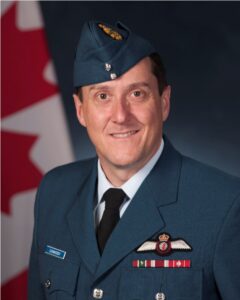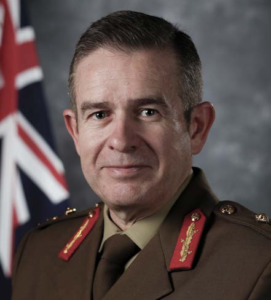
Major General Andrew Bottrell AO, CSC and Bar, DSM
Head Land Systems, Australian Army
Symposium Opening
Major General Andrew Bottrell graduated from the Royal Military College in 1987 to the Royal Australian Corps of Transport.
He has held numerous appointments in Land/Forces Command, Training Command, and Joint Logistics Command, as well as senior staff appointments in both Strategic Operations Division and Army Headquarters. He also served on exchange at the US Army Training and Doctrine Command in 2003-04, and most recently completed an industry secondment to several multinational corporations in the UK and US throughout 2017-18.
Major General Bottrell’s operational service includes tours to the Antarctic (1989/90 & 1990/91), East Timor (1999 and 2006), Iraq (2007) and Afghanistan (2013). He was the Logistics Component Commander for Operation ASTUTE in 2006 while serving as Commanding Officer 3rd Combat Service Support Battalion. While deployed to Iraq in 2007 he was the Staff Officer Grade One Joint Effects on Headquarters Multi-National Division (South East), responsible for coordinating the transfer of Basra Province to Provincial Iraqi Control. In 2013, he was deployed to Afghanistan to coordinate the drawdown of Australian forces.
On promotion to Colonel he was appointed Director of Logistics – Army, responsible for the sustainment of all Defence land materiel. He attended the Centre for Defence and Strategic Studies in 2010, and on promotion to Brigadier was appointed Chief of Staff, Army Headquarters during 2011-12.
Following his deployment to Afghanistan he assumed command of 17 Combat Service Support Brigade, which he held until early 2015 when he was promoted to Major General and appointed as Commander of the Joint Agency Task Force for Operation Sovereign Borders; Australia’s whole of Government counter-people smuggling operation.
Major General Bottrell holds graduate and post graduate qualifications from RMIT, Deakin University, Canberra University, and most recently was a graduate of the Harvard Business School Advanced Management Program. He was awarded the Conspicuous Service Cross in 2003 for his work at Strategic Operations Division and a Bar to the Conspicuous Service Cross in the 2007 for his role as the Logistics Component Commander on Operation ASTUTE. He was awarded the Distinguished Service Medal for his role in coordinating the redeployment of Australian forces from Afghanistan in 2013.
In 2023 Major General Bottrell was appointed an Officer (AO) in the Order of Australia, Military Division for distinguished service as Commander 17 Brigade, Commander Joint Agency Task Force for Operation Sovereign Borders and for his current appointment as the Head Land Systems Division, within the Capability Acquisition and Sustainment Group.
Major General Bottrell is married with two adult children. His hobbies include fly fishing, rugby union and swimming.
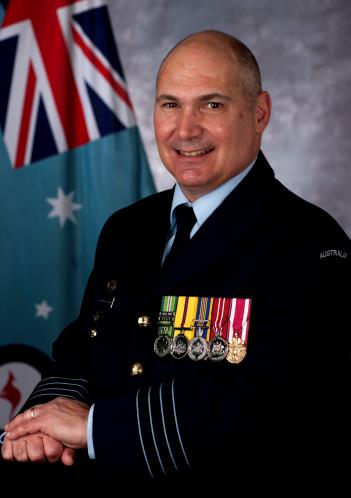
Group Captain Patrick Joseph Del Guidice, CSC
Director Capability Strategy, Royal Australian Air Force
Defence and the Space Domain
Abstract: Space has been integral to Defence’s military operations for decades, but only recently have nations formally recognised Space as an operational domain like sea, land and air (and more recently, cyber). Perhaps the most notable event in this regard was the establishment of the United States Space Force as an independent military service on 20 Dec 2019. Subsequently, many nations have followed suit in their own ways. Australia recognised Space as an independent domain in 2019, appointing the Chief of Air Force as the domain lead. In 2020, the Defence Strategic Update acknowledged the criticality of the space domain and the Force Structure Plan committed $7 billion over the following decade to transition the ADF from a consumer to a sovereign contributor in space. Defence Space Command was established on 18 Jan 2022 to achieve Australia’s strategic space ambitions and lead the effort to assure access to space. Defence Space Command’s initial residence within Air Force was short lived as the Defence Strategic Review of April 2023 recommended a transition to Joint Capabilities Group (JCG) to maximise its effectiveness and form a truly ‘joint’ focus for the space domain. The Chief of Joint Capabilities assumed the space domain lead role on 1 July 2023. This presentation will provide a high level understanding of how JCG is approaching the Space Domain Capability Program in the wake of recent strategic direction.
Bio: Group Captain Patrick Joseph Del Guidice was born in London, Ontario, Canada. He joined the Canadian Air Force on 23 June 1984 and served 12 years in the Canadian Forces. During this time, he earned a Bachelor of Engineering (Engineering & Management) from the Royal Military College of Canada in 1989 and executed roles in Space-Based Radar within the Defence Science and Technology Organisation Ottawa and the Life Cycle Materiel Manager for avionics and electro-optics. As a successful applicant under the lateral recruitment initiative of the Royal Australian Air Force in the mid-1990s, he discharged from the Canadian Air Force in August 1996 and joined the Royal Australian Air Force in October 1996. Group Captain Del Guidice is the Director Capability Strategy in Defence Space Command, Joint Capabilities Group. In this role he has been responsible for drafting and maturing the Space Domain Capability Program Strategy which defines the ‘ends, ways and means’ by which directed strategic outcomes will be achieved in the Space Domain. Throughout his career he has executed roles in air defence command and control, satellite-communications, multi-national information sharing, counter improvised explosive devices, electromagnetic spectrum management, high frequency communications, and assured positioning navigation and timing. He has worked in many Defence organisations including Capability Acquisition and Sustainment Group, Capability Development Group, Air Force Headquarters, Air Command’s 41 Wing and No. 3 Control and Reporting Unit, Chief Information Officer Group, Joint Capabilities Group and Defence Space Command. Group Captain Del Guidice has extensive international and representative experience, having been posted twice to the United States for Air Defence Command and Control, and Surveillance (2000-2002) and for Wideband Global Satellite-communications (2011-2013). He was also deployed to Middle East during the Iraqi War in 2005, embedded with the United States Air Force in the Combined Air Operations Centre. He has effectively worked with numerous international partners in satellite-communications including the United States, United Kingdom, Canada, New Zealand, the Netherlands, Belgium/Luxembourg and others. Additionally, he also chaired the Five Power Defence Arrangements Communications Working Group for several years working closely with partners from the United Kingdom, New Zealand, Singapore and Malaysia. Group Captain Del Guidice is a recognised expert for space and satellite-communications. He was recently awarded the Conspicuous Service Cross for outstanding devotion to duty in the development, acquisition and sustainment of space-based communications for the Australian Defence Force. His other awards include a Chief of the Defence Force Commendation for his contribution to Australian Defence satellite-communications, the Australian Active Service Medal, the Iraq Medal, the Defence Long Service Medal (25 years), the Australian Defence Medal, and a Meritorious Service Medal from the United States Army Space and Missile Defense Command for his work in Wideband Global Satellite-communications. GPCAPT Del Guidice has a Master’s degree in Strategy and Management, and is a Fellow and Chartered Professional Engineer of the Institute of Engineers Australia. He has been happily married to his wife Hélène since August 1995 and in his spare time he enjoys road cycling, fly fishing and rugby. He also maintains a passion for baseball and ice hockey.
Lieutenant-Colonel David Dunwoody
Deputy Director for Data & Analytics Enablement, Royal Canadian Air Force
Addressing Biases in Artificial Intelligence
Abstract: Advancements in artificial intelligence (AI) are enabling new opportunities to employ AI systems to support militaries. With the Canadian Armed Forces undergoing a challenge in recruitment and retention of military members, AI systems can augment and support the deficiencies in staffing in the defence team. A challenge for human-AI teaming is the need for the human user to build trust in the AI system. This challenge can grow when the AI shows very human biases. There is a view that AI can be ethical, safe, and unbiased because math is involved, making the AI automatically neutral. There are two reasons why this belief is false. First, people who design and program the algorithms have their own biases. Second, the data used in AI systems can be messy, incomplete, and a reflection of the biases in society. Many examples show that AI and algorithms can be biased towards race, gender, and culture. To identify potential biases, organizations can apply the AI Now Algorithmic Impact Assessment (AIA) framework or the Government of Canada Gender-based Analysis Plus (GBA Plus). The AIA framework applies to automated decision systems. AIA discloses to the community the purpose, reach, internal use policies, and potential impact of biases in the systems. The community understands the potential risks and benefits of the system and can raise informed questions. GBA Plus is an analytical tool to assess systemic inequalities related to gender, race, ethnicity, religion, age, mental and physical disabilities, and other sorts of intersecting identity factors. It seeks to identify who is impacted by projects and policies and looks to know the impact on communities by understanding their history, social processes, and experiences with racism, sexism, and other systemic inequalities. Identifying and eliminating these biases can improve the human user’s trust in AI.
Bio: Lieutenant-Colonel David Dunwoody joined the Royal Canadian Air Force in 1991 as a reservist and Aircraft Instrument Electrician with 402 Squadron. In 1998, he transferred into the regular force as an Air Navigator. Upon earning his wings in 2002, he was posted to 14 Wing Greenwood, Nova Scotia to serve on the CP-140 Aurora as an acoustic sensor operator. In 2007, he attended the Aerospace Systems Course at the Canadian Forces School of Aerospace Studies (CFSAS) at 17 Wing Winnipeg and authored a technical paper on a Human Centred Approach to Uninhabited Aerial Vehicle Operations. In 2008, LCol Dunwoody was posted to 14 Software Engineering Squadron as the Senior Operational and Liaison Acceptance Officer supporting the maintenance of the CP-140 mission software. 2012 saw him posted to 1 Canadian Forces Flying Training School (1 CFFTS) at 17 Wing Winnipeg. In 2013, he was promoted to major and served as the school’s Operational and Technical Support Flight Commander. In 2016, LCol Dunwoody was posted to the Canadian Forces School of Aerospace Studies as the chair for the Department of Aerospace Capability Development and the Deputy Commandant. 2020 he was posted to the Chief of Force Development coordinating the defence capability board and the future force for joint targeting. In 2022, LCol Dunwoody was assigned as the Senior Aide-de-Camp to the Governor General of Canada. 2023, he was promoted to his current rank and posted to the Digital Transformation Office as the Deputy Director for Data & Analytics Enablement. LCol Dunwoody has deployed twice to Afghanistan for Operation ATHENA and once to Kuwait for Operation IMPACT. During his second tour with Op ATHENA, LCol Dunwoody operated the CU-170 Heron flying over 450 hours of in theatre operations. LCol Dunwoody has a master in Information Systems from Athabasca University and is beginning his PhD studies at the University of Toronto with an aim to research AI Trust in human-machine systems.
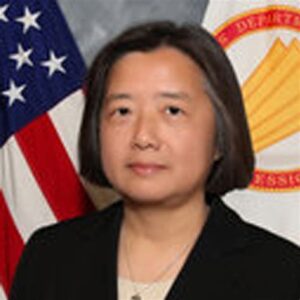
Dr. Jessie Y.C. Chen
U.S. Army DEVCOM, USA
Agent Transparency and Human-Agent Teaming
Abstract: As machines become more intelligent and capable of complex decision making and actions — due to tremendous advancements in AI and autonomy-related technologies in recent decades — how to support effective human-autonomy teaming has become an important research topic in the human-agent interaction community. Among the many challenges identified by various expert groups, agent transparency has been raised repeatedly as a key area of research that is critical to achieving effective human-autonomy teaming and assured autonomy. This talk briefly reviews theoretical frameworks and recent findings on agent transparency in the contexts of human-robot interaction and human-autonomy teaming. Particularly, this talk highlights the Situation awareness-based Agent Transparency (SAT) framework and its applications in various domains. Current challenges and future research directions are also discussed
Bio: Jessie Y.C. Chen is a Senior Research Scientist (ST) for Soldier Performance in Socio-Technical Systems with U.S. Army DEVCOM Army Research Laboratory. She received a Ph.D. in Applied Experimental and Human Factors Psychology from University of Central Florida, a M.A. from University of Michigan (Ann Arbor), and a B.A. from National Tsing-Hua University in Taiwan. Her research interests include human-autonomy teaming, agent transparency, human-robot interaction, and human supervisory control. Dr. Chen is an Associate Editor for IEEE Transactions on Human-Machine Systems and International Journal of Human-Computer Interaction. She guest edited a number of journal special issues: International Journal of Human-Computer Interaction special issue on “Transparent Human-Agent Communications” (2022); Human-Intelligent Systems Integration special issue on “Human-Autonomy Teaming in Military Contexts” (2021); IEEE Transactions on Human-Machine Systems special issue on “Agent and System Transparency” (2020); and Theoretical Issues in Ergonomics Science special issue on “Human-Autonomy Teaming” (2018). Dr. Chen is a co-chair of the International Conference on Virtual, Augmented, and Mixed Reality, a parallel conference under the International Conference on Human-Computer Interaction.

Lieutenant Colonel Edgar Reuber
EUROCONTROL and seconded German Air Force
Requirement Specification for NATO RPAS Sense and Avoid Systems
Abstract: Remotely Piloted Aircraft System (RPAS) constitutes an upcoming NATO asset in the new security environment after the unlawful invasion of Russia into Ukraine. So even more than before the integration of RPAS into the airspace becomes more and more dominant given the ability to distant people, soldiers, from the impact area while protecting humans at the same time ensuring mission effectiveness. For integration, Detect and Avoid (DAA) or in the NATO context Sense and Avoid (SAA) systems are the main technological enabler replacing the (limited) see and avoid capability of the pilot on board. Given the diverse current and anticipated SAA technologies and architectures, the (NATO) decision is to go performance-based rather than prescriptive. Performance-based requirements are non-prescriptive in that they are architecture and technology agnostic. Therefore, performance-based requirements enable greater flexibility though the requirements and means of compliance must be comprehensively defined. Specifying requirements at the required total system performance (RTSP) level provides the maximum amount of technology and architecture flexibility, while ensuring total system performance in the air traffic management (ATM) environment. Consequently, the design of the technical system to interface with the social system and the operator (e.g., pilot) needs to be properly designed following a pertinent Human Systems Engineering approach. Even when a systems engineering approach is adopted, however, it is often constrained in scope to the technological system. This reminds us a significant problem because contrary to popular opinion, UAS have not removed the human element from the system. Instead, UAS provides the option for the human to no longer necessarily be co-located within the physically dynamic components of the system. Similarly, highly automated systems allow modification rather than elimination of the role of humans, such as by decreasing prerequisite skills and aptitudes or allowing increased span of control.
Bio: Edgar Reuber is an active Lieutenant-Colonel (LTC) of the German Air Force seconded to HQ EUROCONTROL as a Senior Military Expert since January 2009. He is looking back at a 40-year career as an Air Traffic Controller and inside the wider European Air Traffic Management (ATM). He holds licences for TWR, Approach and En-route and enjoyed several years of practical experience in several leading positions. LTC Reuber is the POC for the European Military within EUROCONTROL and within the CMC division his main activities are in research, predominantly Single European Sky ATM Research (SESAR), and Remotely Piloted Aircraft Systems (RPAS). One of his projects on the iOAT Flight Plan is in active support to its deployment (MIDI programme) within the European Airspace. LTC Reuber’s fields of expertise also include Flight Safety and Air Accident/Incident investigation, Auditing, Concept Development and Experimentation. He is the co-chair of the NATO Sense and Avoid Specialist Team (SAA ST) since 2014. Currently, LTC Reuber is the Head of Stakeholder Support and business management as well as Deputy Head of CMC Division within EUROCONTROL. Additionally, he holds a Master degree in Aeronautical Science (MSC) with a specialty in Human Systems Engineering.

Dr. Ming Hou
Senior Defence Scientist, Defence Research and Development Canada
Trust-Homeostasis: A Trust Management System for Reliable Human-AI Teaming
Abstract: Artificial Intelligence (AI) is becoming increasingly capable of autonomous decision-making that augments human decision makers. This AI-enabled decision-making capability can assist in areas where information-processing demands inhibit adequate command and control (C2) or understanding of complex systems or operational situations. However, AI (or automation or machine intelligence more broadly) is not a silver bullet for eliminating human errors, and over reliance on AI-driven autonomous systems can have castrophic consequences. Embracing a philosophy that delegates human-machine system (HMS) control from the human to the machine is fraught with significant and complex AI technical barriers including perceptual limitations, hidden biases and lack of transparency and explainability of the decision-making process. The problem of trustworthy AI is complex and multidimensional, and it is largely dependent on both effective human-machine interaction and robust, reliable AI systems. This talk introduces a trust development framework and its associated methodology to provide a foundational set of trust requirements for incorporating an intelligent and adaptive system that seeks to maintain an appropriate level of trust, ideally bi-directional “trust” amongst human and AI teammates that reflects both context and capability of autonomous agents within the HMS. The goal is to guide trust-modeling process towards a trust management system as a viable solution to address trust issues when human teaming with AI-enabled sociotechnical systems.
Bio: Dr. Ming Hou is a Senior Defence Scientist at the Defence Research and Development Canada (DRDC) and the Principal Authority Human-Technology Interactions within the Department of National Defence (DND), Canada. He is an Integrator of the Canadian $1.6 billion Innovation for Defence Excellence and Security (IDEaS) program, and the Co-Chair of NATO Human Factors Specialist Committee. Dr. Hou is responsible for delivering innovative technological solutions, science-based advice, and evidence-based policy recommendations on AI and Autonomy science, technology, and innovation strategies to senior defence and security decision makers and their national and international partner organizations. He was a Scientific Advisor to the Canadian National Centre of Expertise on Human Systems Performance (HSP) and the Canadian National Leader of HSP-Air Joint Panel under The Technical Cooperation Program (TTCP). He directed the Canadian defence R&D efforts in human-autonomy teaming for the $220M TTCP Autonomy Strategic Challenge International Joint Exercise “Autonomous Warriors 2018”. The related Human-AI Symbiosis Weapon Engagement Technology for increasing global safety was spotlighted as one of the most unusual and successful achievements in the past 75 years of DRDC. Dr. Hou is the recipient of the prestigious DND Science and Technology Excellence Award in 2020 and the President’s Achievement Award of the Professional Institute of the Public Service of Canada in 2021. His book “Intelligent Adaptive Systems: An Interaction Centered Design Perspective” (two Eds) has been recognized internationally and its related human-AI interaction design guidelines are instrumental to the development of three NATO Standards on Human Systems Integration Guidance, Sense and Avoid Guidance, Human Factors Experimentation Guidance for Unmanned Aircraft Systems, as well as the United Nations White Paper on “Human-Machine Interfaces in Autonomous Weapon Systems: Consideration for Human Control”. Dr. Hou is an Adjunct Professor at the University of Toronto and University of Calgary and a Fellow of the International Institute of Cognitive Informatics and Cognitive Computing. He is the General Chair of the 4th IEEE Conference on Human-Machine Systems (2024) and the General Co-Chair of the 1st and 2nd IEEE International Defence Excellence and Security Symposia (2023 and 2024).

Dr. Andrew Lucas
Managing Director, Agent Oriented Software, Australia
“Bottom-up” or “Top-down”, which AI is best for defence?
Abstract: AI, or Artificial Intelligence, is now receiving a lot of interest, based on the power and potential of recently released large language models, such as ChatGPT and GPT4. However, AI covers a broad spectrum of computer science techniques, from speech recognition engines such as Siri, through the route-finding in Google Maps, to machine learning and formal logic. The challenge is to choose the right approach for the right problem. Defence, being a very complex domain with many aspects, offers endless problems. AOS has developed its technology base of AI software. This is focused on symbolic AI, particularly the technology of intelligent software agents, which are known as BDI or rational agents. Intelligent software agents are based upon formal logic, which is why they are referred to as “top-down” AI. The logical approach leads to rational reasoning, and consequently offers the potential for Explainable AI. When building autonomous machines and systems, AOS combines the intelligent software agents with other AI technologies, including machine learning, machine vision, and speech recognition. AOS’s development of autonomous vehicle technology includes teams of autonomous vehicles for the agricultural, mining, defence and transport industries. This leads to the realisation of human/machine teams, and two examples that AOS is developing will be illustrated: one in Integrated Air & Missile Defence and the other being the Kelpie, an autonomous ground vehicle.
Bio: Andrew Lucas is the founder and Managing Director of Agent Oriented Software (AOS), established in Melbourne in 1997 as an offshoot of the Australian Artificial Intelligence Institute (affiliated with the AI Center at SRI International, Menlo Park, CA). AOS specialises in AI and autonomous and robotic systems – working on autonomous systems with the Australian Department of Defence, UK Ministry of Defence, RAAF, Australian Army and Navy. AOS has developed its technology base of symbolic AI software, focused on intelligent software agents. Combined with other AI technologies, including machine learning, machine vision, and speech recognition, these technologies provide the basis for intelligent and autonomous systems. Andrew leads AOS’s development of autonomous vehicle technology, including teams of autonomous vehicles for the defence, agricultural, mining and construction industries. Andrew holds a PhD in Aeronautical Engineering from Cambridge University and a Bachelor of Engineering (1st Hons) from the University of Melbourne. Andrew is a member of the Royal Aeronautical Society’s Remotely Piloted and Autonomous Aircraft Systems Specialist Group.

Jawahar Bhalla
President, International Council on Systems Engineering Australian Chapter, Australia
A Conceptual Systems Engineering Framework for AI-Intensive Systems with a Focus on Data through the Life-Cycle
Abstract: Systems Engineering (SE) has been employed for over 70 years to design, build, and evolve complex systems. It is highly effective when the preconditions for the successful application of traditional SE are met. Increasingly, contemporary systems, incorporate Artificial Intelligence (AI) and Machine Learning (ML) that enable sophisticated autonomous behaviour with the ability to adapt to suit unforeseen situations. Systems that incorporate AI do not meet the preconditions for the successful application of traditional staged SE approaches. There is a need for refinement of over-arching SE frameworks and best practice to enable the holistic end-to-end SE of AI-Intensive Systems. This presentation will outline a conceptual refinement to contemporary evolutionary developmental practice for the SE of AI-Intensive systems (SE4AI) with a particular focus is on the end-to-end curation of reference data used as a basis for ML model design verification, model-training, and model-validation.
Bio: Jawahar Bhalla is a passionate Systems professional and president of INCOSE’s Australian chapter (SESA). He contributes to the advancement of Systems Thinking, SE and M&S locally, regionally, and globally. He has a BE (Aero-space Engineering), a BSc (Computer Science), a Master’s in SE and is a PhD candidate working on a SE Framework for the Engineering and Assurance of AI-Intensive systems. He has served on the Board of the Simulation Australasia and was recognised in 2021 as the recipient of the “Ray Page Lifetime Achievement Award” for an outstanding contribution to the advancement of Modelling and Simulation in the Australasian region.
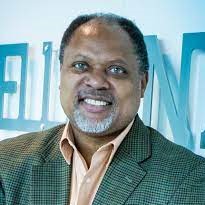
Dr. Edward Tunstel
CTO, Motiv Space Systems, Inc., USA
Toward Operationally Responsive On-Orbit Robotic Capability
Abstract: Government satellite owners desire commercial robotic upgrade capabilities that are operationally responsive. Flexible solutions enabled by modular robotic arms and modular active payloads are called for that can be integrated with a variety of spacecraft buses to transform them into robotic satellite servicers. This talk outlines characteristics such a solution using a representative concept of operations and servicing vehicle configured using existing modular subsystems.
Bio: Dr. Edward Tunstel received B.S. and M.E. degrees in mechanical engineering from Howard University and the Ph.D. in electrical engineering from University of New Mexico, both in the USA. He is the CTO at Motiv Space Systems, Inc., a space robotics and motion control company, since 2021, following several years as Robotics Associate Director and Group Leader at Raytheon Technologies Research Center. He spent a decade leading robotics and autonomous systems R&D for national security and space applications at Johns Hopkins APL as both a Senior Roboticist in its Intelligent Systems Center and Space Robotics & Autonomous Control Lead in its space department. He was with NASA JPL for 18 years as a Senior Robotics Engineer and Advanced Robotic Controls Group Lead where he worked on NASA Mars rover missions as flight systems engineer for autonomous navigation and as surface mission operations lead for mobility & robotic arm subsystems. He is the Sr. Past President of the IEEE SMC Society and an IEEE Fellow with over 180 publications in his areas of research interest including autonomous, cooperative and human-collaborative robotics.
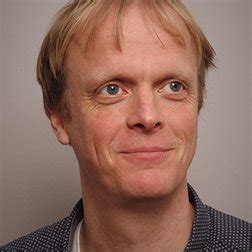
Dr Jurriaan van Diggelen
Senior research scientist, Department of Human-Machine Teaming, TNO, Netherlands
Levels of Meaningful Human Control in Responsible Military Artificial Intelligence
Abstract: A key requirement for responsible AI in the military is to ensure meaningful human control (MHC) in an operational setting. The concept of a MHC is not, however, binary, and could vary from one operational setting to another depending on the competencies of available humans and autonomous systems. We introduce five levels of MHC and argue that control is only meaningful if the human has the required cognitive capacity to perform the control function. Anchoring the levels in human’s mental capacity, we derive practical requirements for interaction design, testing and validation, and assuring accountability.
Bio: Jurriaan van Diggelen is a senior research scientist at the department of Human-Machine Teaming at TNO in the Netherlands. He is currently working for one year at Defense Science and Technology Group (DSTG) in Melbourne to align Dutch and Australian research on AI in defense. He has studied Cognitive Artificial Intelligence at Utrecht University and has a PhD in Artificial Intelligence and Multi-agent systems. He is program leader of the defense research program Human-machine teaming focusing on making humans collaborate with AI systems as teammates. Furthermore, he leads the ELSA lab consortium which aims to assure Ethical, Legal, and Societal aspects of military Artificial Intelligence. He is chair of several NATO groups on meaningful human control of AI-based systems.

Michael Hardy
Director, Innovation & Technology, Government Solutions, APAC, KBR, Australia
Capability stewardship underpins Defence+Industry+Academia innovation
Abstract: With a limited uniformed ADF and Public Service workforce, capability stewards are the vital ‘link’ between in platform acquisition and sustainment. They bring together the best of academia and industry to support the entire lifecycle of a platform. Capability stewards are the innovation leaders, solving the ‘wicked problems’ that the Defence customer faces, leaning on academia and the industrial base/ ecosystem. Clever sustainment models, identification of ‘minimum viable capability’, extension of ‘life of type’ through R&D and fast prototyping are all part of the industry-led capability stewardship model. In this presentation, Michael Hardy will provide some of the ‘science and maths’ behind the successful capability stewardship.
Bio: As the Director of Innovation & Technology for KBR’s Government Solutions APAC business, Michael Hardy leads a team of Innovation Champions across the business. He is known for providing non-technical explanations to highly technical problems and solutions, especially in the Defence and Space domains. Michael’s background is technology-enabled training and worker enablement – effectively the human-in-the-loop of systems, capabilities and platforms.

Professor Abdollah Homaifar
North Carolina A&T State University, USA
Opportunities and Challenges for Operationalizing Urban Air Mobility
Abstract: The integration of Unmanned Aerial Systems (UAS), personal air vehicles, and Urban Air Mobility (UAM) as part of the Advanced Air Mobility (AAM) systems into the National Airspace System (NAS) is becoming mainstream for future transportation systems. New developments leverage technologies in autonomy, UAS Traffic Management (UTM), electric powertrain reliability, multi-redundant flight system architectures, and advanced wireless connectivity. These enable the unique requirements of UAM airspace and for aircraft management. However, these advancements lead to numerous challenges for the safety and reliability such as navigation in highly complex and dynamic environments, cyber-attack analysis, validation and verifications and integration of all the developed algorithms for UAM deployment. In my talk, I will provide a short summary of opportunities and the challenges for operationalizing the UAM into the AAA systems.
Bio: Abdollah Homaifar is a Samuel P. Langley Distinguished Professor, Duke Energy Eminent Professor and professor in the Department of Electrical and Computer Engineering at North Carolina A&T State University (NCA&TSU). He received both a B.S. and M.S. degree in Electrical Engineering from the State University of New York at Stony Brook in 1979 and 1980, respectively. In 1987, he obtained his Ph.D. from the University of Alabama in Electrical Engineering. In addition, he is the Director of the Autonomous Control and Information Technology Institute and the Testing, Evaluation, and Control of Heterogeneous Large-scale Systems of Autonomous Vehicles (TECHLAV) at NC A&T SU and he is the lead of the Secure and Safe Assure Autonomy a multi-Institution and a disciplinary project funded through NASA University Leadership Initiative which is in its 3rd successful year. His research interests include machine learning, testing and evaluation of autonomous vehicles, big data processing, optimization, optimal control, flexible robotics, modeling, and signal processing. Dr. Homaifar has authored and co-authored over three hundred articles in numerous journals and conference proceedings, published three book chapters. He has participated in six short courses, serves as an associate editor of numerous journals, and is frequent reviewer for IEEE Transactions on Fuzzy Systems, Man Machines & Cybernetics, and Neural Networks. He is a member of the IEEE Control Society, Sigma Xi, Tau Beta Pi, and Eta Kapa Nu. After 30 years, despite his many accomplishments and research successes his passion remains his students. While he currently acts as lead PI for over a half dozen large grants he still makes time to teach and mentor. Presently, he supports over a dozen graduate and undergraduate students and meets with them weekly to guide them in their research and studies. As he often states, “I get my energy from my students and it’s why I get up in the morning. I love what I do!”
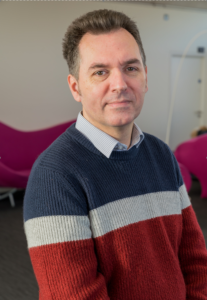
Dr Dale Richards
Principal Human Factors Engineer, Thales, UK
Measuring Success – Human-Autonomy Teaming
Abstract: With the increasing focus and application of intelligent systems in defence it is possible to lose sight of the human element in assessing its effectiveness. Indeed, when we examine the introduction of AI it tends to be very much task- and goal-focussed. When we then ask if the introduction of AI assists the human in achieving their task it raises several fundamental questions surrounding what it is we need to measure in order to assess the effectiveness in question. This short talk will examine these factors from a human factors perspective, outlining the need for identifying a number of key factors before we can ask (let alone answer) whether the introduction of synthetic intelligence is to be deemed a benefit from an end-user perspective.
Bio: Dr Dale Richards is a Chartered Psychologist and Principal Human Factors Engineer. He has significant industrial and academic experience conducting applied research in human-autonomy teaming and has published many journal and conference papers on this topic. These primarily are around uncrewed autonomous air systems, autonomous cars and the wider human-autonomy interaction paradigm as we consider the wider application of AI. Following 13 years leading HF MOD work in autonomous systems at QinetiQ, Dale spent several years in academia winning and leading research in this area. He is currently a Principal Human Factors Engineer at Thales UK.

Kevin Di Filippo
Lockheed Martin, Canada
North star: an Alternative Position, Navigation, and Timing (A-PNT) Solution
Abstract: Uncrewed Aerial System (UAS) operators are increasingly interested in undertaking operations in GPS-denied environments. Lockheed Martin Skunk Works CDL Systems in Calgary, Alberta, is currently developing Lockheed Martin NorthstarTM, an Alternative Position, Navigation, and Timing (A-PNT) solution intended to provide location estimates in the absence of satellite-based localization. Northstar is a vision-based algorithm, using a Simultaneous Localization and Mapping (SLAM) engine that leverages overlapping images to compute a vehicle’s position in real-time. Northstar is intended for use on its own, or as one element of a broader A-PNT constellation. With a particular emphasis on small UASs, Northstar is targeting low Size, Weight, and Power (SWaP) platforms.
Bio: Kevin Di Filippo has been with Lockheed Martin Canada since 2018. Having originally joined as a software developer working on ground control stations for Uncrewed Aerial Systems (UASs), he switched to product management three years ago, focusing on Alternative Position, Navigation, and Timing (A-PNT) solutions. Prior to joining Lockheed Martin, Kevin earned degrees in Physics (McGill) and Computer Science (Hong Kong University of Science and Technology), and has worked in fields ranging from astronaut training software and satellite attitude determination algorithms to urban wind simulation, atmospheric dispersion modelling, and oil and gas wellbore completion simulation.

Dr Simon Reay Atkinson
Captain, RAN, Air Command Innovation, Australia
Scientific Discovery Level: A Tool for Assessing Technology Readiness Levels
Abstract: Evolution is both incremental and by step change. Science and Technology follow different entangled harmonic time constants that combine and separate about conjoined surge / stagnate, and invention / innovation logistic curves. These time constants are used to understand how the Science at different discovery levels may interact with Technology, at different readiness levels, and human generations – and vice versa. This paper examines the adoption of Technology Readiness Level (TRL) as a means of assessing against the science. This gives rise to the adoption of a Scientific Discovery Level (SDL) for subjectively situating TRL. The SDL-TRL Instrument identified allows for objective assessments to be made for situating science and technology. To arrive at the SDL-TRL instrument, historical analysis of previous scientific ages; associated technologies; and human generations is undertaken. This leads into analysis of future scientific ages, with ethical and moral implications for humanity.
Bio: Associate Professor Simon Reay Atkinson is a Captain in the Royal Australian Navy with extensive international experience, including in the US, Middle Est, South West Asia, and NATO. Twice mentioned in despatches, innovative problem solving has been a highlight throughout a wide array of career experiences. A first degree in engineering was combined with a second degree (a research-based MPhil) in International Relations majoring in Law and Economics. This provided the foundation for a PhD which examined, through engineering and social science lenses, complex systems and human factors / organisational modelling including with regard to cyber, quantum, risk and resilience. The underlying strength of research has been its applicability and re-use; allowing for re-interpretation and practical application. Including as Chief of Staff of the Defence Response to Covid at Joint Task Force 629 – responsible also for domestic operations, fires and floods.

Professor Mehrdad Saif
University of Windsor,
CANADA
Innovations in Naval Cyber Protection
Abstract: In this presentation, we provide an overview of a collaborative research project involving universities, industry partners, and government organizations. This project is sponsored by Canada’s Department of National Defence (DND) through its Innovation for Defence Excellence and Security (IDEaS) program. Our collective objective is to address the cybersecurity challenges faced by the Royal Canadian Navy (RCN) in ensuring the safety and security of its vessels, crew, and operations in an increasingly complex digital landscape. Specifically, our research falls within the IDEaS-funded line of research entitled “Knot Vulnerable: Locking Down Cybersecurity on Naval Vessels.” This talk focuses on the development of innovative solutions and methodologies within this broader research framework. These solutions aim to bolster the cyber resilience of RCN’s fleet, enabling them to operate reliably amid potential cyberattacks and cyber-physical manipulations. The research emphasizes integrated cybersecurity methodologies that encompass real-time intrusion monitoring, diagnostics, and resilient control recovery to support the continuous availability of naval vessels.
Bio: Mehrdad Saif received the B.S.E.E, M.S.E.E, and Ph.D. from Cleveland State University, Cleveland, OH, USA, in 1982, 1984, and 1987. During his graduate studies, he worked on research projects sponsored by NASA Lewis (now Glenn) Research Center and Cleveland Advanced Manufacturing Program (CAMP). In 1987, he joined the School of Engineering Science, at Simon Fraser University as an Assistant Professor. From 2002 to 2011, he was the Director of the School of Engineering Science and led a major expansion of that School during his term. He was the Dean of the Faculty of Engineering at the University of Windsor from July 2011 to September 2021. In that role, he led major enrollment growth through strategic enrollment management and the expansion of Faculty of Engineering programs into such areas as aerospace engineering, engineering management, B.Eng. technology, mechatronics, and others. Dr. Saif has also overseen significant growth in the number of faculty as well as the research productivity of the Faculty of Engineering. Dr. Saif’s research interests are in systems and control, estimation, and observer theory, model‐based as well as model‐free AI/ML‐based approaches to fault diagnostics, condition monitoring, diagnostics, and prognostics, and application of these areas to automotive, power, autonomous systems, and other complex and cyber‐physical systems. He has published over 400 refereed journal and conference papers plus an edited book in these areas. He has been cited over 9500 times and has a Google h‐index of 49. Dr. Saif has been listed in Stanford University’s database of the top 100,000 (out of nearly 7M) career scientists over the span of 1965 to date for four years in a row. The same database lists him in the top 0.7% of scientists in his field of expertise. Additionally, among all electrical and electronics engineers, Research.com lists Dr. Saif at 2681 worldwide and 140th nationally. Dr. Saif has been a consultant to several industries and agencies such as GM, NASA, and B.C. Hydro, Ontario Council of Graduate Studies, and others. He served two terms (1995, 1997) as the Chair of the Vancouver Section of the IEEE Control Systems Society and is currently a member of the Editorial Board of IEEE Access, IEEE SMC Magazine, IEEE Transactions on Industrial Informatics, and IEEE Transactions on Industrial Cyber‐Physical Systems. Saif is a Registered Professional Engineer in Ontario, Canada, and is a Fellow of the Canadian Academy of Engineering (CAE), Engineering Institute of Canada (EIC), as well as the Institution of Engineering and Technology (IET).
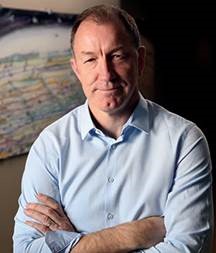
Phil Chrothers
Boeing Australia
MQ28 Development
Abstract: The MQ28 Ghost Bat is the first all-Australian designed and built military aircraft in 50 years. It is using many different technologies that aim to bring 10X less cost than contemporary, crewed aircraft. This presentation will touch on some of the main innovations.
Bio: Phil Crothers has 25 years experience with Boeing, mainly in the research field, including automation and composites development and deployment for which he is a Technical Fellow. He has also served in Europe, setting up BR&T offices in Munich, Germany, and Sheffield, UK. Currently, Phil is leading Affordability and New Technology on the Airpower Teaming System (ATS), integrating 40+ roadmaps, and has co-authored the Australian Robotics Roadmap (Manufacturing).
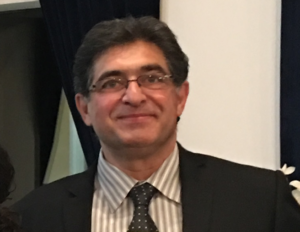
Professor Hamid Garmestani
Georgia Institute of Technology, USA
Advanced Manufacturing in Metal 3D Printing -Microstructure and Materials Computational Modeling
Abstract: In the current state of engineering, manufacturing process design is greatly hampered by the difficulty in predicting and controlling the microstructure of the part and the final property, largely due to the lack of fundamental understanding in the process mechanics and inverse methodologies to determine optimum process parameters. A design framework is developed with direct linkages between Process Path parameters and the final microstructures without resorting to experimentation or FEM and applied to Metal Additive manufacturing. State of the art microstructural design and fabrication methodology is complemented with a multi-scale computational scheme to optimize structure-property relationship. A modeling methodology in presented for microstructure prediction for single and dual-phase materials and structures manufactured using Selective Laser Melting (SLM). Process prediction and planning of metal additive manufacturing (AM) based on computational mechanics. An analytical model for the estimation of thermal stress and residual stress based on the predicted thermal profile have been developed. The final microstructure is predicted using a closed form mathematical solution and a self-consistent model is used for the prediction of effective properties. Thermal model, thermal stress model, molten pool model and grain size analytical model have all been built and verified applied to Aluminum, Titanium and dual Phase Ti64. The model can be used in an inverse methodology to optimize the process parameters to produce the microstructure and properties needed in final product.
Bio: Dr. Hamid Garmestani, faculty since 1991, is a Professor of Materials Science and Engineering at the Georgia Institute of Technology. He has developed methodologies that addresses an inverse methodology and innovations in various aspects of processing, structure-property relationships, simulation-based design of materials, and statistical continuum mechanics for homogenization in composites and polycrystalline materials. He has applied the methodologies above to structural alloys (Al, Ti and Steel) and more recently in Microstructure design of additive manufacturing and machined surfaces. He has published more than 400 publications with 9244 citations and an H-index of 54 and 5 books in materials science. He has organized more than 30 workshops and symposia in the emerging subject of materials design. He was awarded “Superstar in Research” by FSU-CRC in year 2000. He was also the recipient of the 2000 Engineering Research Award of the FAMU-FSU College of Engineering and recipient of the Faculty Award for Research from NASA. He is Associate Editor of the Journal of Mechanics of Materials, Editor of Computers, Materials and Continua and Theoretical and Applied Multi-scale Modeling of Materials and was in the editorial board of several other journals such as Engineering Materials and Technology and International Journal of Plasticity.
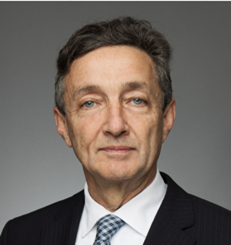
Braden McGrath
Managing Director, MITRE,
Australia
Does AUKUS need a FFRDC?
Abstract: To address increasing technical parity with common potential adversaries, Australia, United Kingdom (UK), and United States (US) formed the AUKUS Alliance. AUKUS is a trilateral security pact focused on development of naval nuclear propulsion systems, autonomous undersea capabilities, hypersonic weapons, electronic warfare, cyber warfare, and quantum computing. AUKUS faces broad-based system engineering challenges that require engineering and scientific research expertise that draws upon multiple disciplines and government service domains AUKUS provides Australia with the opportunity to enhance and accelerate Defence innovation and acquisition ecosystem by increasing ties to the US and UK larger ecosystems.
AUKUS could benefit from an organisation that is not “business as usual,” and one that can help identify, develop, recommend, and integrate the right technologies to satisfy national security requirements in an economical and timely manner. This organisation would provide innovative, independent, and deep technical expertise across all phases of the acquisition process to assist the three Governments urgently develop next generation, “fit for purpose”, defence capabilities. Facing similar challenges in the cold war, the US Department of Defense created the Federally Funded Research and Development Center (FFRDC) model. The FFRDC is a US Government created, trusted ecosystem of not-for-profit entities that exist to bring deep technical expertise to assist the US Government execute its national security missions.
Currently, Australia does not have an FFRDC ecosystem, and the UK has limited equivalents. An FFRDC would complement traditional innovation and acquisition ecosystem stakeholders of industry, academia, and government. The benefit of the FFRDC approach includes a not-for-profit motive with no conflict of interest and an entity that can serve AUKUS as an independent technical expert, trusted advisor, and honest broker. An AUKUS-centric FFRDC has no vested interest in any technologies, solutions, or future associated contracts. An AUKUS FFRDC would also serve as a bridge between the governments, academia, and industry across the three nations accelerating innovation and its transition into the defence space.
Bio: Dr. Braden McGrath is the Managing Director for MITRE Australia. Braden also holds an academic appointment as Enterprise Professor at University of Canberra. Braden has successfully commercialised high-profile research and has led diverse teams of engineers and scientists to reinvigorate organisational and sector-wide performance.
Braden is a Fellow of Engineers Australia; Chartered Engineer in the Engineers Australia Colleges of Leadership and Management and Biomedical Engineering; a QinetiQ Fellow; a member of the Society of Flight Test Engineers; and a certified Sports Medicine Trainer.
Braden holds a Ph.D. in Aeronautical Engineering from the University of Sydney and a Master’s in Aeronautics and Astronautics from MIT and was previously an Honorary Professor at the Australian National University. Braden continues to act as a US Navy, US Army, NTSB, ATSB mishap Subject Matter Expert (SME) analysing military and civilian Spatial Disorientation aircraft mishaps.
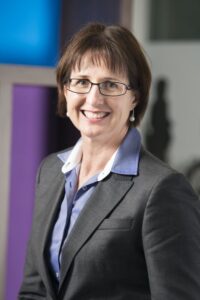
Major General Kathryn Toohey (Rtd)
Australian Army
Panel discussion: Improving test and evaluation efficiency and effectiveness in managing risk for capability equipment for defence and security operations
Bio: Kathryn Toohey retired from the Australian Army at the rank of major general in late 2022. As a senior Army officer, Kathryn specialised in Defence capability and was appointed the first Head Land Capability within Army Headquarters where she was responsible for the modernisation and sustainment of Army capability; including helicopters, tanks, communication systems and uniforms. In her last role as Head Force Integration, she was responsible to provide test and evaluation advice to the Defence Investment Committee. In 2021, her team released the Defence Test and Evaluation Strategy. Kathryn holds an Executive Master in Business Administration (MBA), a Master of Management in Defence Studies; a Graduate Diploma in Information Technology and a Bachelor of Electrical Engineering (Honours). Since retiring from the Army, Kathryn provides a range of mentoring and advisory services and is a member of several boards, including the Swinburne Defence Advisory Board.
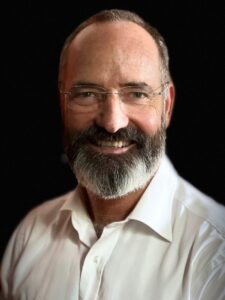
Air Marshal Mel Hupfeld (Rtd)
Royal Australian Air Force
Panel discussion: Improving test and evaluation efficiency and effectiveness in managing risk for capability equipment for defence and security operations
Bio: Mel Hupfeld was appointed as a member of the Air Services Australia Board in August 2023 as a non-Executive Director. He also has roles on the Air Force Association Board, the Spitfire Association Advisory Council, the Swinburne Research Institute Advisory Board and is a member of the Public Service Advisory Board to provide strategic advice to Government and Industry clients.
Mel was born in Sydney in 1962 and grew up in Broken Hill, New South Wales until moving to Semaphore, South Australia with his family. He completed his final two years of High School at Le Fevre High in Port Adelaide. He joined the Royal Australian Air Force as an Academy Cadet in January 1980, graduating as a pilot, with a Bachelor of Science degree in 1983.
During his Air Force career, he flew Mirage, Classic Hornet and Super Hornet fighter aircraft in several of the Air Force’s fighter squadrons and achieved over 3,500 flying hours. In 2001 Mel took command of No 75 Squadron (75SQN) and led the Squadron in operations in the Middle East on Operations BASTILLE and FALCONER, as a part of Australia’s contribution to Operation IRAQI FREEDOM in 2003. He completed several staff appointments including in the capability development and force design areas and completed the Royal Air Force Advanced Command and Staff Course, graduating with a Master of Arts in Defence Studies from King’s College in London in 1998.
Mel commanded at every level within Air Force and notably, on promotion to the rank of Air Marshal, was appointed as Chief of Joint Operations in May 2018 and subsequently Chief of Air Force in July 2019. He transitioned to the Air Force Reserve in July 2022, and retired to the South Coast of New South Wales. Since then, he has assisted the Minister for Home Affairs and Cyber Security as a member of the Expert Advisory Board to develop a National Cyber Security Strategy. As part of his transition to civilian life he has ambition to contribute to various Boards and Advisory Councils.
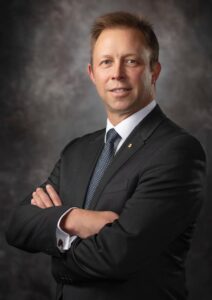
Vice Admiral Michael Noonan (Rtd)
Royal Australian Navy
Panel discussion: Improving test and evaluation efficiency and effectiveness in managing risk for capability equipment for defence and security operations
Bio: Vice Admiral Mike Noonan retired from the Royal Australian Navy in mid 2022 after over 38 years service. In his last role, as Chief of Navy Australia, he was entrusted by government to be its principal naval advisor, and to raise, train and sustain Australia’s naval forces. His Command of the Royal Australian Navy spanned a critical period where Australia’s strategic environment underwent rapid and unanticipated deterioration, described as the
‘most consequential strategic realignment since WWII’ – with the Indo-Pacific at its centre. His tenure was characterised by a focus on, and genuine respect and care for, the people he led, and he determinedly worked to expand the Navy and secured the government’s commitment to grow to 21,000 by 2035. He oversaw the introduction into service of a number of new naval capabilities, and personally led a small team that transformed the idea of nuclear powered submarines for Australia to an attainable capability outcome.
When not tending to his small herd of cattle in south-east Queensland, Admiral Noonan now supports industry and academia on a broad range of defence and maritime issues, and sits on a number of related boards. He holds Masters degrees in Maritime Policy, Business Administration, Marketing Communication, and International Relation. He has also completed the Advanced Management Program at the Harvard Business School, and is a Fellow of the Australian Institute of Company Directors. In 2022, he was awarded an Honorary Doctorate of Laws by the University of Wollongong for his contribution to the maritime security of Australia and the Indo-Pacific region.
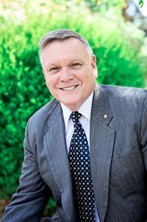
Professor Gary Hogan AM, CSC
Australia
Panel discussion moderator: Improving test and evaluation efficiency and effectiveness in managing risk for capability equipment for defence and security operations
Bio: Gary is a former Head of Military Intelligence and Director-General of Scientific and Technical Analysis in the Australian Defence Department. He is a graduate of the Chinese National Defence University and taught China Studies on faculty at the US National Defense University, Washington DC. He was Australia’s first Defence Attaché to the Socialist Republic of Vietnam and the first foreigner to graduate from Indonesia’s National College of Governance. He served three years as Defence Head at the Australian Embassy in Jakarta. He speaks Mandarin, Vietnamese, and Bahasa Indonesia. Gary is a member of the Order of Australia and was awarded the Conspicuous Service Cross while on operational service in the Middle East with US Special Operations Command. His foreign decorations include the US Legion of Merit and the Grand Meritorious Military Order of Indonesia. Following a distinguished military career, Gary served seven years on the Council of Australia’s largest tertiary institution, the Royal Melbourne Institute of Technology. He worked as Senior Adviser for Defence and National Security at professional services firm KPMG, before joining the staff of Victoria’s then Defence Advocate, Greg Combet. He was appointed Enterprise Professor for Industry Engagement at the University of Melbourne, where he ran Australia’s only national PhD internship program, placing more than 400 PhD candidates from 32 universities into internships with over 120 government and industry partners. As a member of Melbourne-based consultancy CIS, Gary was Interim CEO of a CRC proposal in the “Care Economy”, helping to build a consortium across six universities and 80 industry partners, attracting over $100M in cash and in-kind funding. As manager of the Health Centre of Excellence at the Australian Trade and Investment Commission (Austrade), he led the areas of MedTech, Digital Health and Military Medicine, assisting Australian companies seeking offshore markets and overseas companies seeking Australian partners. He has served on the Northern Territory Government’s Defence and National Security Advisory Group and as an adviser at market intelligence house, DefenceConnect. He is currently Professor of Business Analytics at the University of Newcastle and Managing Director of space exploration company “Lunaria.One”. Gary’s superpower is utilising his linguistic experience to translate between the cryptically unintelligible languages of government, the private sector and Higher Education.

